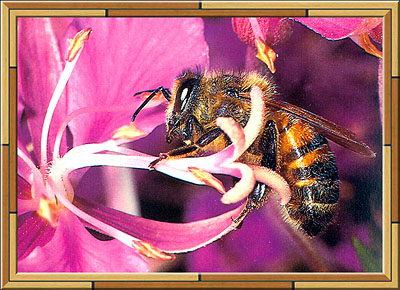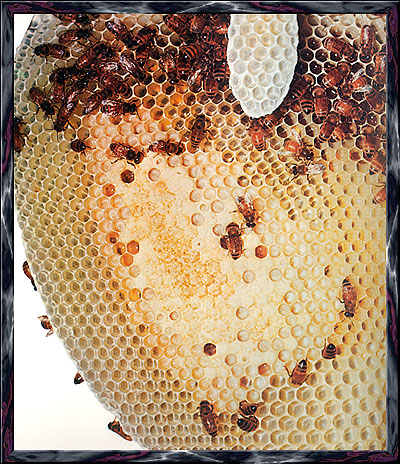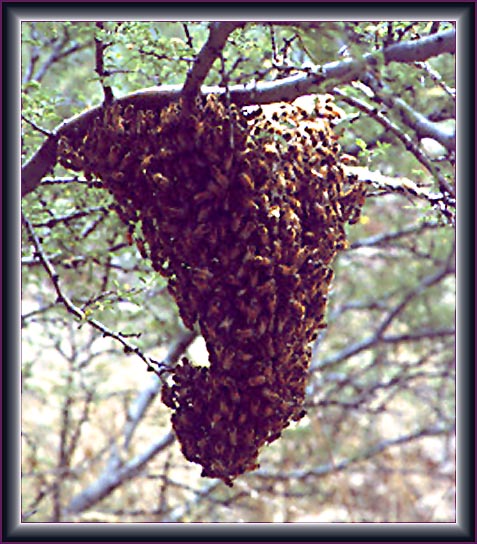
Apis mellifera
The Honey Bee
The honey bee is also referred to as A. mellifica is regarded as a domestic animal in spite of never having become one. As early as 6,000 years ago it was kept by the ancient Egyptians. This is illustrated in many of their graves and temples. Most honey bees in Britain come from domestic hive colonies. Sometimes, however, a swarm which has left a hive may be found living in the hollow of a tree.
An average colony depends upon the efforts of nearly 60,000 workers (sterile females) for its food and care. A hive over-winters in a multi layered cluster with the queen at the centre. Inside this cluster the temperature is maintained at between 20 and 36oC the temperature on the outside of the cluster does not drop below10o C. All the workers that were hatched in autumn (the ones hatched in summer only last ~ 6 weeks), males, drones and the queen all have to be fed, and I don't mean steak dinners. All throughout the spring and summer the bees gather nectar and pollen, the latter being fed to the larvae. In a good season a large hive can gather as much as 480lbs of honey, but they would only use about a third of this to overwinter...the rest is for us...yum-yum. Below is a honey-comb that is not in a hive.

A queen can live from 4 - 5 years, but a colony may outlive its queen, when a new queen takes over the hive she kills all the other young queens. A new colony can only be formed by the old queen swarming with half the hive's workers to a new site (see below), but before this can happen a new queen has to be reared. New colonies are formed to ensure the survival of the species, because they are very susceptible to disease, bad summers which cause lack of honey, parasitisation by other insects especially the varroa mite.
The workers feed the larvae honey , pollen and food juice, which is a milky solution rich in nutrients produced by glands in the workers mouths. Eggs that will become queens are given larger cells and also larger quantities of the food juice. The queens themselves produce a similar juice but a lot more concentrated, sometimes known as Royal Jelly that calms the workers in a hive, by inhibiting the growth of their ovaries and hence no new queens. The royal jelly coats the queen as she grooms herself and it is licked off by workers. As the queen ages the supply of royal jelly begins to fail and the workers recognise this and immediately start to rear new queens, although only one is needed several are reared just in case a few should die.
The bee can recognise colours; blue and yellow are best, it can only see red as a dark grey colour. The eyes are very sensitive to ultra-violet light as are bumble bees and wasps especially. This colour preference is used by the bee-keeper in the choice of colour of the front of the hives.
Bees have their own language in which they use dancing to indicate the location of a good supply of nectar. Not only the location, but how to get there and how far it is from the hive. This was researched Professor K. von Frisch and his team, he won the Nobel prize for his research.
